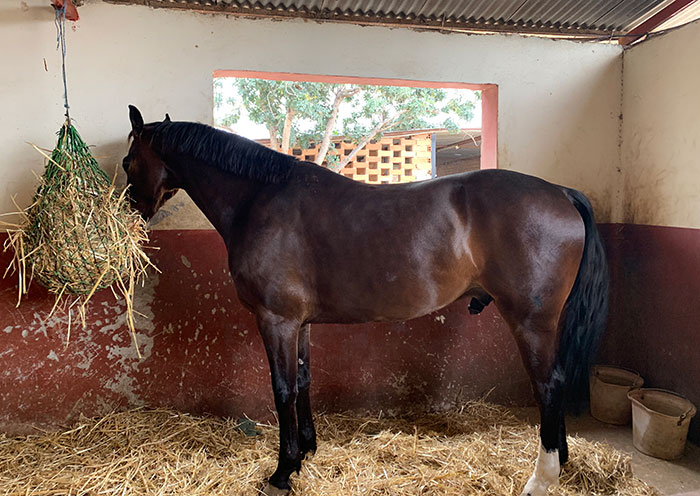
A horse on stall rest or with limited activity for an extended period of time is at risk for excessive weight gain if fed the same diet as when it was healthy and active. When changing a stall-confined horse’s diet, there are different strategies and tips to consider for ensuring the horse is being fed the right diet for its needs.
Krishona Martinson, an extension equine specialist with University of Minnesota, notes that dietary changes are important, but just switching from alfalfa-grass hay to strictly grass hay is not the perfect solution.
“While grass tends to be lower in calories, it also tends to be higher in nonstructural carbohydrates,” Martinson explains in her Horse Newsletter. “Therefore, you solve one problem — help limit weight gain — but create another potential problem in the form of an increased risk for developing laminitis if you switch hay.”
The best way to confirm the nutrient and calorie content of hay is to have it tested.
Along with hay analysis, the specialist also suggests simply feeding less hay. A forage test will show which nutrients to supplement to ensure the horse is meeting its nutritional requirements. Martinson also suggests feeding in a slow hay net to extend feeding time when feeding less hay. A hay net slows the horse’s eating and reduces the risk of excessive weight gain.
If the hay on hand is not ideal for a short-term situation, look for more mature alfalfa-grass hay or teff hay. Martinson notes that mature alfalfa-grass hay reduces calories and also has a lower nonstructural carbohydrate content. Teff hay also tends to be lower in these two categories.
“Buying a few bales of teff or more mature hay and feeding it in place of some of your existing hay may provide a balance of lower calories and nonstructural carbohydrates for the stall-bound horse,” Martinson says. “For example, slowly transition your horse to 25% teff and 75% existing hay over a 10-day period.”
The specialist notes that horses may not eat the lower quality hay at first, but given time and limited other choices, it will eventually consume the forage.
For those horses on stall rest, a change in calorie intake is important. “Testing your hay, making slow transitions over 10 days, using hay nets, and evaluating the type and amount of hay fed are critical for successfully managing these horses,” Martinson concludes.

Michaela King served as the 2019 Hay & Forage Grower summer editorial intern. She currently attends the University of Minnesota-Twin Cities and is majoring in professional journalism and photography. King grew up on a beef farm in Big Bend, Wis., where her 4-H experiences included showing both beef and dairy cattle.

